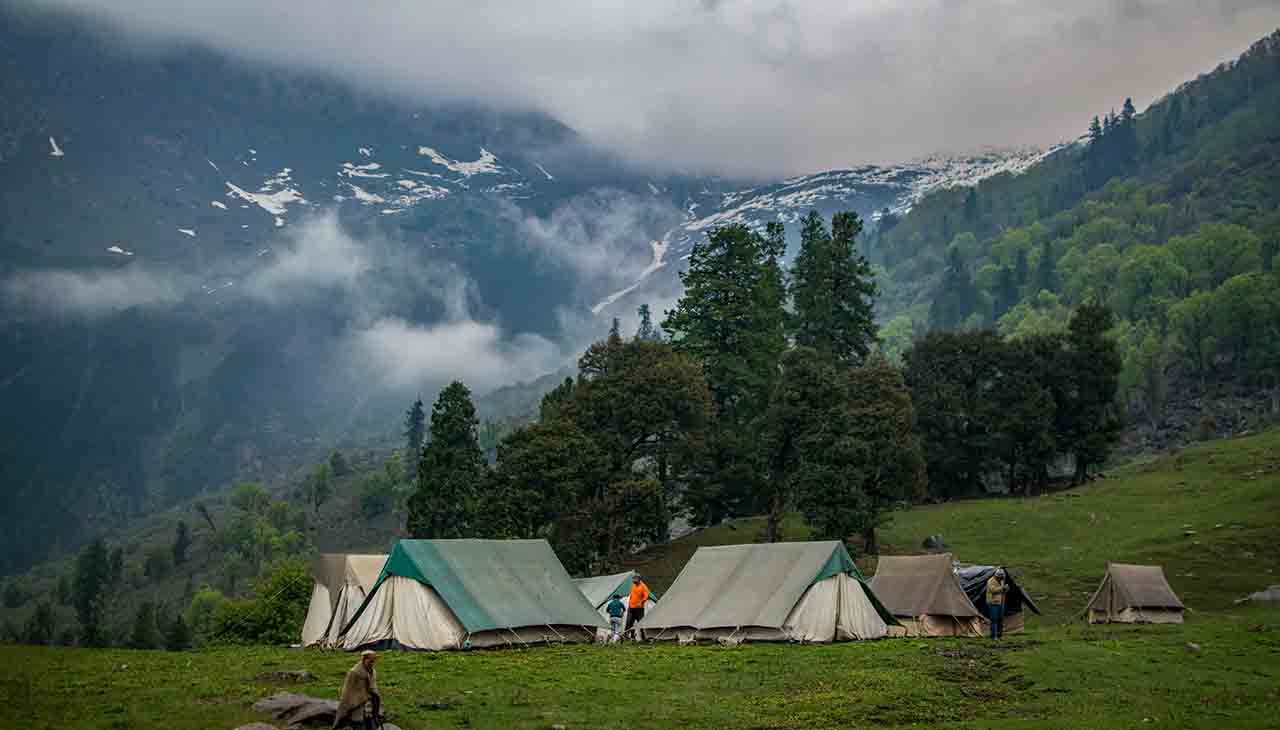Setting up a tent is an essential skill for any outdoor enthusiast. Whether you’re planning a camping trip or attending a music festival, knowing how to set up a tent will ensure a comfortable and hassle-free experience. In this guide, we will walk you through the step-by-step process of setting up a tent, from choosing the right location to securing the tent properly. So, let’s get started and learn how to set up a tent like a pro!
Choosing the Right Location
Choosing the right location for your tent is crucial to a successful camping trip. You should look for a flat, even surface free from rocks, roots, and other sharp objects that could potentially damage your tent or make sleeping uncomfortable. Make sure the area is not prone to flooding and is far enough away from bodies of water to avoid attracting insects or wildlife. Also, consider the direction of the wind and the sun. You may want to place your tent in a spot where it won’t be directly in the sun in the morning, and where it will be protected from wind. Safety should be your primary concern, so ensure the site is not underneath any loose branches or rocks that could potentially fall. Lastly, respect the environment and always follow the principle of ‘leave no trace’, ensuring you leave the site as you found it.
Gathering the Necessary Equipment
Before setting up your tent, it’s essential to gather all the necessary equipment. This typically includes the tent itself, along with its poles and stakes, a ground cloth or tarp (also known as a tent footprint), a mallet or hammer for driving the stakes into the ground, and possibly a tent repair kit for any unexpected damages. Make sure to also bring a flashlight or headlamp to aid setup in low light conditions. If your tent requires guy lines (ropes used to secure the tent to the ground), ensure you have these handy and know how to use them. Lastly, always check to verify you have all parts of your tent before leaving for your trip. It’s a good idea to do a trial setup at home first, so you’re familiar with the process and sure you have everything needed.
Unpacking and Organizing the Tent
When it comes to setting up a tent, proper organization is key to a smooth and efficient process. Unpacking and organizing the tent components before starting the setup will save you time and frustration. Here are the steps to unpack and organize your tent:
- Find a clean and dry area: Start by finding a clean and dry area to unpack your tent. This could be a flat surface like a picnic table or a clean patch of ground.
- Lay out the tent: Carefully lay out the tent body in the chosen area. Ensure that it is unfolded completely, with no wrinkles or folds.
- Locate the tent poles: The tent poles are essential for setting up the structure. Locate them in the tent bag or separate storage compartment. Check if all the poles are present and undamaged.
- Assemble the poles: Start assembling the poles according to the instructions provided. Connect the segments to form the complete pole set. Some tents may have color-coded or numbered pole sections for easier assembly.
- Attach the rainfly: If your tent has a rainfly, locate it in the tent bag. Attach the rainfly to the designated clips or loops on the tent body. Make sure it is aligned properly and securely attached.
- Sort the stakes and guy lines: Locate the stakes and guy lines that come with your tent. Sort them out and make sure you have all the necessary pieces. Stakes are used to secure the tent to the ground, while guy lines provide stability and support.
- Organize smaller accessories: Some tents may come with additional accessories such as gear lofts, storage pockets, or footprint/groundsheet. Organize these accessories and decide where you want to place them inside the tent.
- Check for any damages: Before proceeding with the setup, inspect all the components for any damages or defects. Look for tears, bent poles, or broken clips. If you notice any issues, contact the manufacturer for assistance or consider repairing or replacing the damaged parts.
- Keep everything easily accessible: Arrange all the tent components in a way that they are easily accessible during the setup process. This will help you save time and avoid confusion when setting up the tent.
By following these steps to unpack and organize your tent, you’ll be well-prepared and ready to proceed with the setup process smoothly. Remember to refer to the specific instructions provided by the tent manufacturer for any additional guidance. Happy camping!
Setting Up the Tent
Once you have unpacked and organized your tent, it’s time to move on to setting it up. Follow these step-by-step instructions to set up your tent:
- Choose the right location: Before setting up your tent, carefully select a suitable campsite. Look for a flat and level area that is free from rocks, roots, or any other sharp objects that could damage the tent floor. Avoid low-lying areas that may collect water during rain.
- Lay down the tent footprint or groundsheet: If your tent comes with a footprint or groundsheet, lay it down on the chosen spot. This protective layer will provide an extra barrier between the tent floor and the ground, helping to prevent moisture and wear.
- Lay out the tent body: Unfold the tent body and place it over the footprint or groundsheet. Make sure it is centered and aligned properly.
- Assemble the tent poles: Take the tent poles and assemble them according to the manufacturer’s instructions. Most tent poles are color-coded or marked for easy identification. Slide each pole section into its corresponding sleeve or clip on the tent body.
- Raise the tent: With the tent poles connected, start by lifting the center of the tent. Gradually move to the corners, extending the poles until the tent is fully upright. Be cautious not to apply too much force to avoid damaging the poles or the tent fabric.
- Secure the tent poles: Once the tent is standing, secure the tent poles in place. This may involve fastening clips or sleeves, connecting hooks, or tightening tension bands. Make sure each pole is securely in place to provide stability to the tent structure.
- Stake down the tent: Take the stakes provided with your tent and insert them through the designated loops or grommets located along the tent base. Push the stakes into the ground at a 45-degree angle, ensuring they are firmly anchored. Place stakes at all corners and any additional points indicated by the tent design.
- Adjust the tension: Adjust the tension of the tent fabric and guy lines to ensure a taut and stable setup. Tension the guy lines by pulling them taut and securing them with the provided tensioners or knots. This will help improve the stability of the tent in windy conditions.
- Check for proper alignment and ventilation: Stand back and inspect your tent to ensure it is properly aligned and symmetrical. Adjust the position if necessary. Also, check for proper ventilation by opening the windows or vents to allow airflow inside the tent.
- Test the setup: Once your tent is set up, give it a gentle shake to ensure it is stable and secure. Take a walk around the tent and check for any loose connections, flapping fabric, or potential issues that need attention.
By following these steps, you should have your tent set up and ready for a comfortable camping experience. Remember, practice makes perfect, so don’t hesitate to familiarize yourself with the setup process before heading out on your outdoor adventure. Happy camping!

